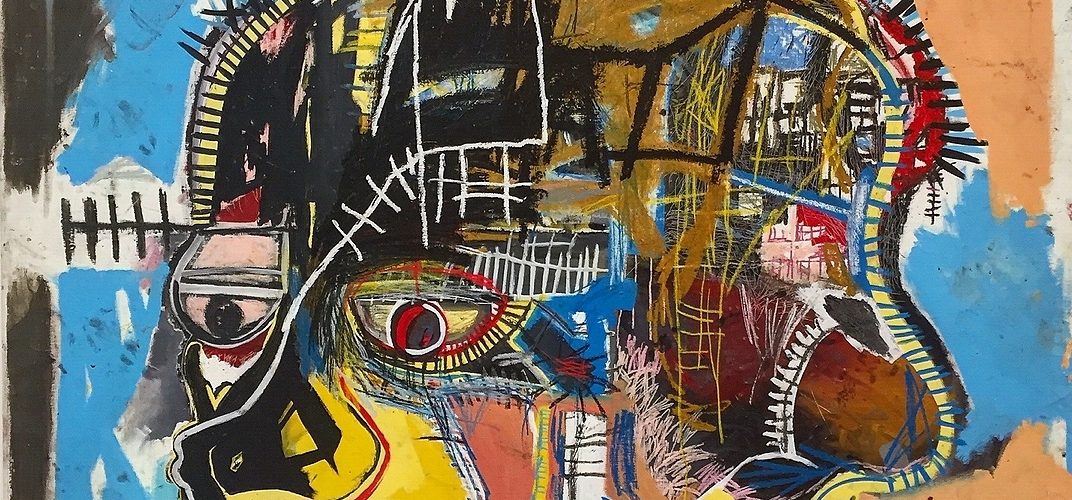A Closer Look at the Unique Style of Basquiat’s Neo-Expressionism

There are only a handful of contemporary American artists as broadly known and as highly appreciated as Jean-Michel Basquiat. His signature style brought him fame as an “outsider artist” who undermined the existing conventions of expressionism and won the hearts of art connoisseurs with bold, unapologetic art pieces. So, what’s behind Basquiat’s neo-expressionism, and what made the artist so wildly famous in the international art community?
Life Story of Jean-Michel Basquiat
Jean-Michel Basquiat was born in 1960 in Brooklyn, New York, and developed an interest in art early in childhood. His mother encouraged Basquiat’s passion and took him to numerous NYC museums and art galleries to familiarize the young creative with existing artistic schools and styles.
Basquiat started painting graffiti-like works in a unique gestural style after leaving home and joining street groups of teens. His first artworks were painted as graffiti on the Brooklyn walls under the group pseudonym SAMO©, quickly gaining popularity in the 1980s and making Basquiat famous at the age of 20.
Basquiat’s short-term career until his death in 1988 was bright, with a personal 1980 exhibition in “The Times Square Show” and the presence of his works in top-rated galleries in New York and Germany. His fast rise to fame is in part explained by the glorious revival of the art community’s interest in abstract expressionism and the rising interest in indigenous themes in art – all present in Basquiat’s neo-expressionism.
Main Features of Basquiat’s Neo-Expressionism
Since Jean-Michel Basquiat dropped out of school at the age of 17 and never received any formal art training, his visual method is regarded as gestural and intuitive. A notable influence in Basquiat’s artistic method can also be traced to his acquaintance with Andy Warhol in 1983 and their partnership that followed.
The repeated theme in Basquiat’s paintings is a stylized self-portrait mixed with indigenous motifs from African, Caribbean, Aztec, and Hispanic cultures. Basquiat painted many African American historical figures, sports celebrities, writers, and famous jazz performers; he also extensively used symbols in his visual approach.
With a unique blend of iconic pop culture images, celebrities, and Indigenous themes in Basquiat’s paintings, his work is reasonably regarded as a potent reflection of the dominant socio-cultural and political zeitgeist of the USA of the 1980s. His paintings are full of raw energy and unique style that boldly address the troubling aspects of race, class, gender, and Indigenous identity influences of personal relevance to Basquiat and broader importance to the US community.
